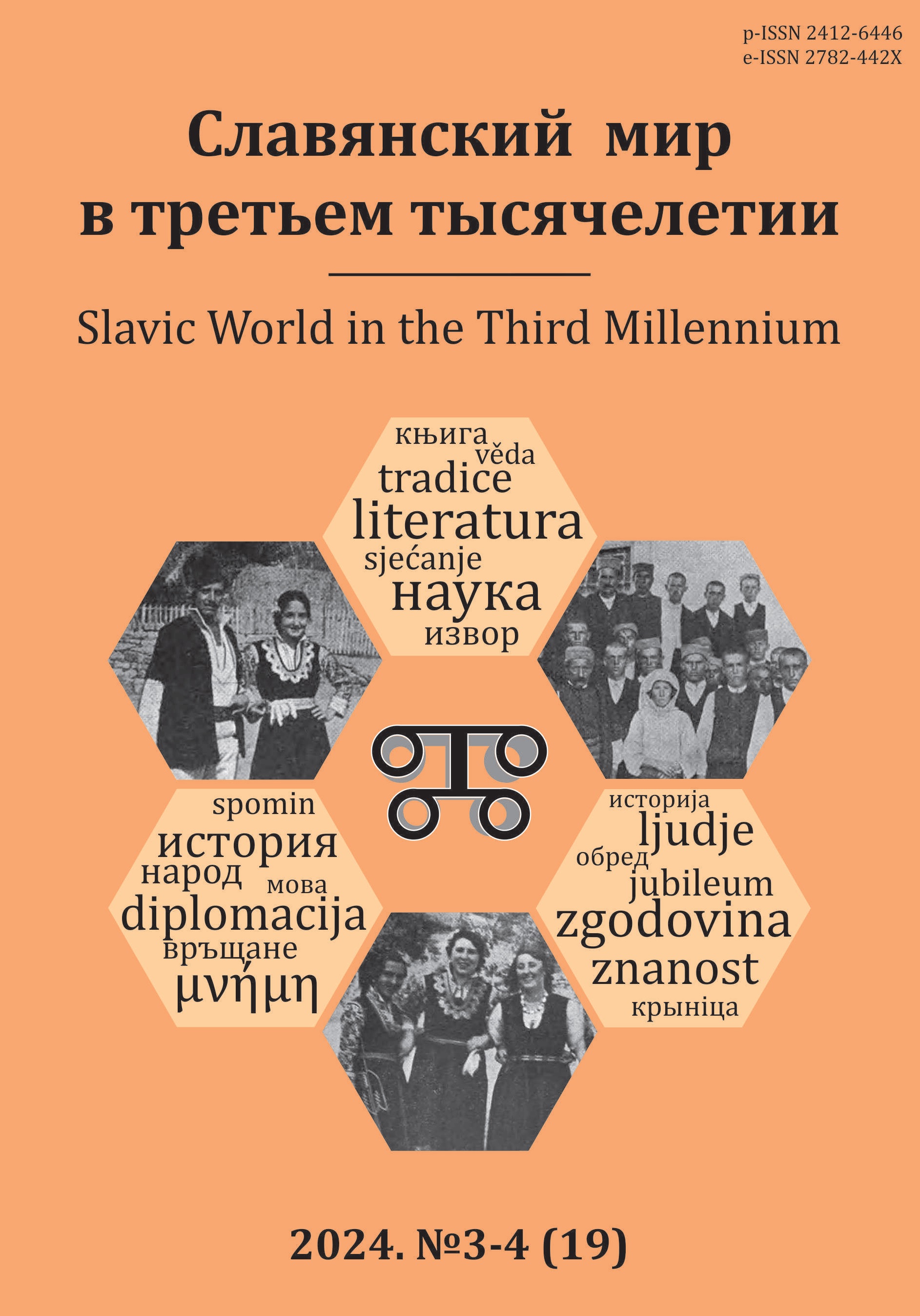Young Scholars Conference“Slavic World: Community and Diversity”. Moscow, 21–22 May 2024. Section “History”
DOI:
https://doi.org/10.31168/2412-6446.2024.19.3-4.15Keywords:
Conference, young scientists, Slavic studies, methods of historical research, history of diplomacy, history of YugoslaviaAbstract
The Conference of Young Scientists “Slavic World: Community and Diversity” in its current annual format has celebrated its 10th anniversary. The conference has come a long way and changed along with the surrounding world over the decade of its existence. It has become an important center of intellectual contacts for young scientists from different regions of Russia and the world. At the same time, the evolution of the conference was not without certain losses, primarily related to the representation of foreign participants. The article is devoted to the work of the “History” section, which was attended by scientists from Moscow, St. Petersburg, Voronezh, Yekaterinburg, Kazan, Nizhny Novgorod, Rostov-on-Don, Belgrade (Serbia), Budapest (Hungary) and Minsk (Republic of Belarus). It is shown that the topics of the reports of young scientists were extremely diverse thematically, regionally and methodologically. In addition to the history of events, researchers turned to microhistory, to biographies of both famous historical figures and secondary personalities, but most often the research was based on text analysis. Thanks to such approaches, the geographical boundaries of the studied territories were expanded, far from being limited to Slavic countries: for example, texts of Russian diplomats about Iran or the French Writer J. de Stael about Bohemia were analyzed. Finally, chronologically, historians were interested in topics from Great Moravia to the political scandal with the President of Hungary K. Novak in 2024. All this allows us to conclude that Slavic studies in Russia, despite obvious difficulties, continue to develop.
Received 11 September 2024
Revised 9 October 2024
Accepted 29 October 2024
For citation: Peretyatko, A. Yu, 2024. Young Scholars Conference “Slavic World: Community and Diversity”. Moscow, 21–22 May 2024. Section “History”. Slavic World in the Third Millennium, 19 (3–4), pp. 298–310. https://doi.org/10.31168/2412-6446.2024.19.3-4.15



